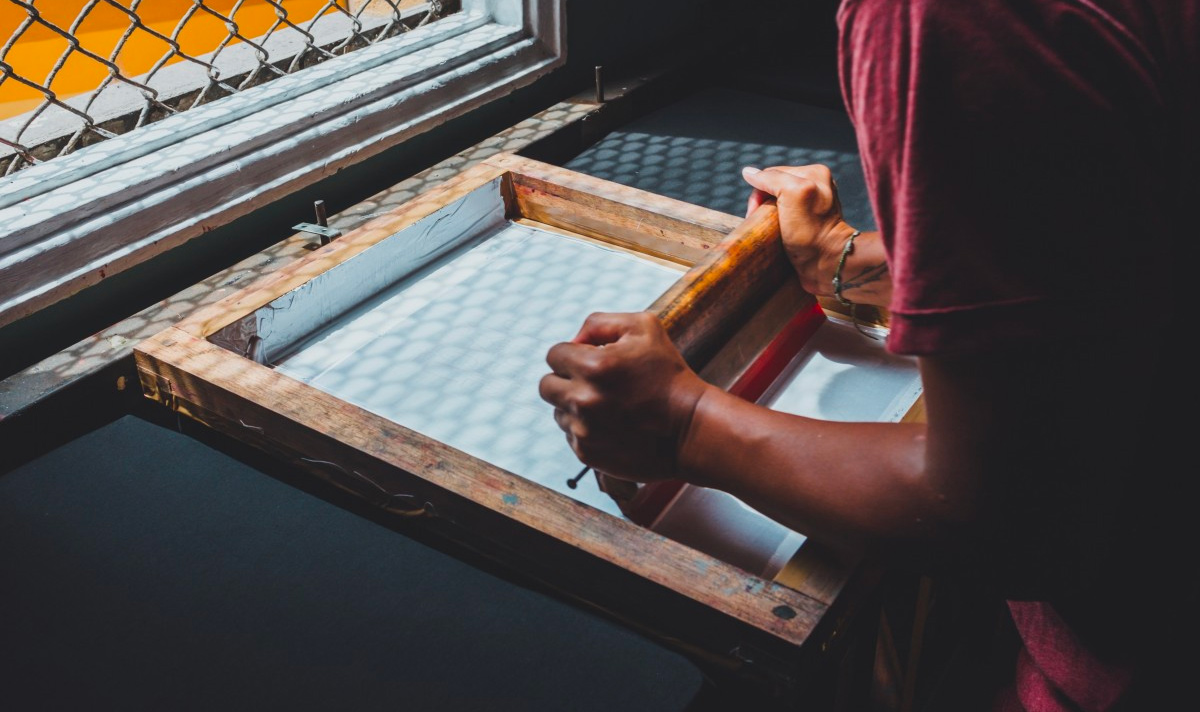Screen printing
 Screen printing is a permeographic printing process that uses a screen printing frame as a cliché.
Screen printing is a permeographic printing process that uses a screen printing frame as a cliché.
The screen printing frame consists of a rectangular or square frame made of metal, plastic or wood, on which a polyester-based fabric is stretched (silk was originally used for this). Unlike other printing technologies, with screen printing it is possible to quantify and change the thickness of the ink used to obtain the image on the substrate.
For this reason, unlike with other technologies (flexography or offset printing), with screen printing it is possible to achieve full colour and full coverage. Furthermore, only with screen printing, using specific varnishes (more resistant to shocks and rubbing) braille embossing can also be obtained without using a hot printing unit.
To manage the amount of ink consumed, the printer can use various types of loom that differ in the number of threads and the thickness that makes the weft of the screen-printing fabric.
For example, a 48-thread 50-micron screen-printing frame has a fabric composed of 48x48 threads per square centimetre, where each thread is 50 microns thick.
A 100-thread 70-micron screen-printing frame, on the other hand, has a fabric composed of 100x100 threads per square centimetre, where each thread is 70 microns thick.
By using the first frame of 48 50 micron threads, the printer will consume more ink during printing, and consequently obtain fuller and thicker color fields, since since the frame has a wider weft and is composed of thinner threads, more color will be able to pass through it. The screen printing process is divided into two steps: pre-printing and printing.
During pre-printing, after receiving the sketch from the customer or having created it for them, the graphic designer must define the number of colors that make up the image. Each color will correspond to a screen printing pass and a frame. Once the number of colors has been defined, each layer is isolated and printed on a transparency (or film), which is then used to obtain the impression on the screen-printing frame previously sprinkled with photosensitive gelatine. The frame is then placed in an ultraviolet lamp together with the transparency. The areas covered by it will be protected and will not be impressed.
In the others, the UV light will promote the solidification of the photosensitive gelatine, which will not allow the ink to pass through during printing. Once the frame has been impressed, it is washed to remove residual photosensitive gelatine from the remaining open areas and delivered to the printers, who will mount it in the screen printing unit. When the process starts, a squeegee (or squeezer) attached to a mechanical arm will move and press the ink onto the screen printing frame, causing it to penetrate the frame and adhere to the substrate to be printed.
This page is part of Gerp's glossary of terms. Gerp is a dedicated MIS to packaging industry. You are welcome to browse this website or contact us for more information.